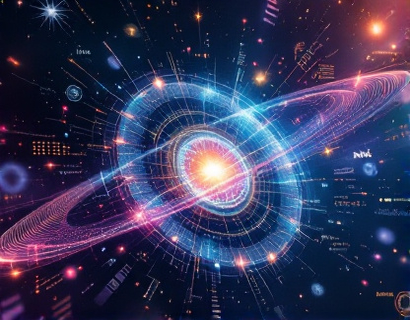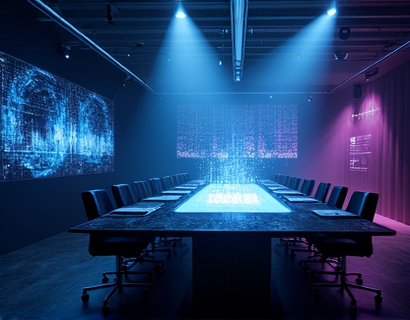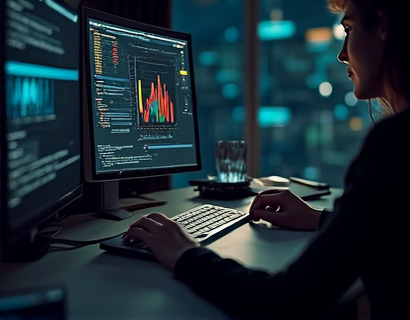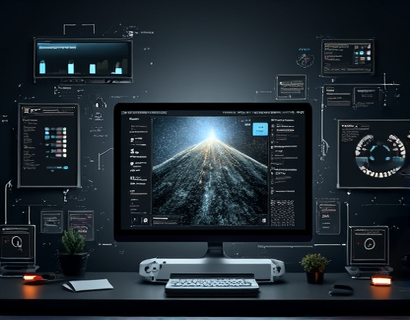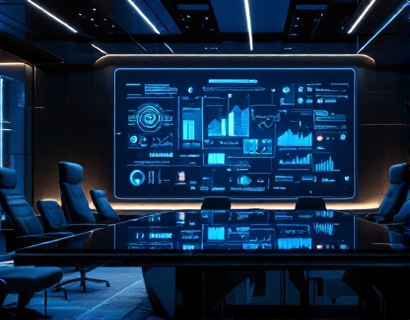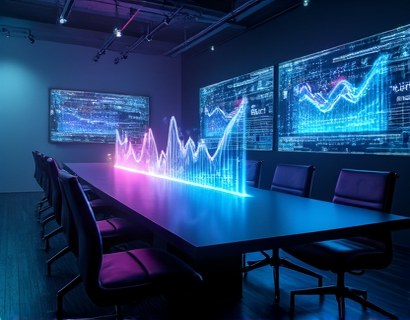Unlocking the World of Unique Digital Assets: A Premier Guide for Enthusiasts and Collectors
The digital age has ushered in a new era of collectibles and assets, transcending the physical boundaries that once defined value and rarity. In this comprehensive guide, we delve into the fascinating realm of unique digital assets, offering a thorough exploration for collectors and enthusiasts. This premier platform serves as an extensive digital asset showcase, where a vast array of unique and valuable resources converge, providing an unparalleled environment for discovery, connection, and engagement with exclusive digital treasures tailored to every interest.
Digital assets, often referred to as digital art or NFTs (Non-Fungible Tokens), have gained significant traction in recent years. These assets are unique digital files that represent ownership of a specific item, such as artwork, music, videos, or even in-game items. Unlike traditional collectibles, digital assets exist in a virtual space, yet they can hold substantial value and cultural significance. This guide aims to navigate through the complexities of this emerging market, providing insights into the types of digital assets available, how to evaluate their value, and how to engage with the community.
Types of Digital Assets
The landscape of digital assets is diverse and continually evolving. Here are some of the primary categories:
- Digital Art: Unique pieces of digital artwork, often created using advanced software and techniques. These can range from abstract designs to hyper-realistic images.
- Virtual Real Estate: Digital representations of land or properties within virtual worlds or blockchain-based platforms. These can be used for various purposes, from gaming to social interactions.
- Collectible Items: Digital items that hold collectible value, such as in-game items, avatars, or unique digital objects. These are often tied to specific games or platforms.
- Music and Audio: Original digital music tracks, sound effects, or audio clips that are unique and can be owned and traded.
- Videos and Animation: Unique digital videos, animations, or GIFs that have artistic or cultural value.
- Text and Literature: Digital books, poems, or other written works that are unique and can be owned.
Each category offers a unique set of opportunities for collectors and enthusiasts. Digital art, for instance, has become a significant part of the contemporary art scene, with many established artists venturing into this medium. Virtual real estate, on the other hand, is gaining popularity in the metaverse, where digital lands can be used for various activities.
Evaluating the Value of Digital Assets
Assessing the value of digital assets can be challenging due to their intangible nature. However, several factors contribute to their worth:
First, artist reputation plays a crucial role. Assets created by well-known or emerging artists with a strong following tend to command higher prices. The artist's track record, previous sales, and community recognition are key indicators of value.
Second, rarity and uniqueness are essential. Non-fungible tokens ensure that each asset is unique, which inherently increases its value. Limited edition assets or those with specific attributes can also drive up demand and price.
Third, community demand is a significant factor. The level of interest and engagement within a particular community can influence an asset's value. Active communities with a strong interest in a specific type of digital asset can drive prices up.
Fourth, blockchain and platform also matter. The blockchain on which an asset is minted and the reputation of the platform can affect its value. Major blockchain platforms like Ethereum, Binance Smart Chain, and Solana have different market dynamics and fees, which can impact the overall value.
Lastly, provenance and history can add to an asset's value. Assets with a clear ownership history and notable past transactions are often more desirable. Documentation and transparency in the asset's history can enhance its credibility and appeal.
Engaging with the Digital Asset Community
Engaging with the digital asset community is a vital part of the collecting experience. Here are some ways to get involved:
First, join online forums and social media groups. Platforms like Reddit, Discord, and Telegram have dedicated communities where collectors and enthusiasts share knowledge, discuss trends, and showcase their collections. These communities are invaluable for learning and networking.
Second, attend virtual and physical events. Conferences, exhibitions, and meetups provide opportunities to meet other collectors, learn from experts, and see digital assets in action. These events can be a great way to stay updated on the latest developments and trends.
Third, participate in auctions and marketplaces. Platforms like OpenSea, Rarible, and SuperRare offer markets where digital assets are bought and sold. Participating in auctions can be an exciting way to acquire unique items, while marketplaces allow for more straightforward purchases.
Fourth, create and share your own assets. If you have creative skills, consider creating your own digital assets. This not only allows you to express yourself but also gives you a deeper understanding of the market and the effort that goes into creating valuable digital items.
Building a Digital Asset Collection
Building a digital asset collection involves several steps, from research to investment. Here’s a guide to help you get started:
First, define your interests. Identify the types of digital assets that resonate with you. Whether it's digital art, virtual real estate, or collectible items, focusing on a specific area can help you build a cohesive and valuable collection.
Second, conduct thorough research. Understand the market dynamics, trends, and the specific assets you're interested in. Follow reputable sources, analysts, and community leaders to stay informed.
Third, set a budget. Digital assets can range from affordable to extremely expensive. Determine how much you're willing to invest and stick to your budget. Consider starting with smaller, more affordable assets to build your knowledge and portfolio.
Fourth, secure your assets. Use secure wallets to store your digital assets. Hardware wallets and cold storage options provide better security compared to online wallets.
Fifth, engage with the community. Participate in discussions, ask questions, and learn from more experienced collectors. Building relationships within the community can provide valuable insights and opportunities.
Lastly, be patient and persistent. Building a valuable collection takes time and effort. Stay committed to your interests and continue learning and adapting to the evolving landscape.
Future Trends in Digital Assets
The digital asset market is rapidly evolving, with several trends shaping its future:
First, increased adoption by mainstream institutions. As more traditional institutions recognize the value of digital assets, we can expect increased legitimacy and broader acceptance. This could lead to more robust infrastructure and greater liquidity in the market.
Second, advancements in technology. Improvements in blockchain technology, such as scalability and interoperability, will enhance the user experience and open up new possibilities for digital assets.
Third, growth of the metaverse. The metaverse, a collective virtual shared space, is gaining momentum. Digital assets will play a crucial role in this ecosystem, from virtual real estate to in-world items and experiences.
Fourth, regulatory clarity. As the market matures, we can expect more clear regulations, which will provide greater stability and protection for investors and collectors.
Fifth, diversification of asset types. New types of digital assets are emerging, such as digital collectibles tied to physical items (NFT Physical) and digital assets representing real-world assets. This diversification will expand the market and attract a broader range of collectors.
Conclusion
The world of unique digital assets offers a rich and exciting landscape for collectors and enthusiasts. From digital art to virtual real estate, the possibilities are vast and continually expanding. By understanding the different types of assets, evaluating their value, and engaging with the community, you can navigate this vibrant market with confidence. As the digital asset landscape evolves, staying informed and adaptable will be key to success. Whether you're a seasoned collector or a curious newcomer, the journey into the world of digital assets is sure to be rewarding.






